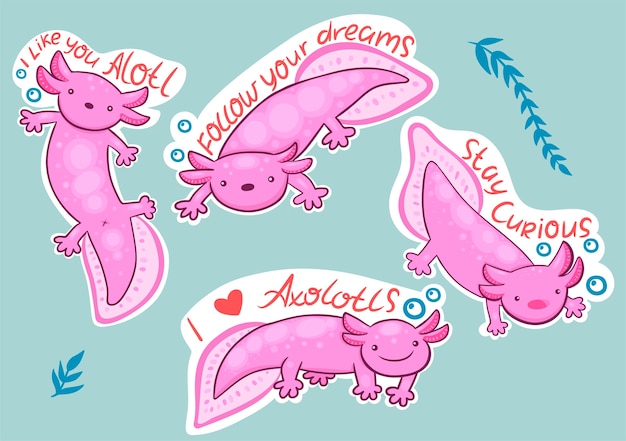

Axolotls are amphibians that have the ability to regenerate their limbs and even parts of their brain.
These fascinating creatures are native to Mexico.
Axolotls are known for their unique appearance, with external gills and fringed crown-like crests on their heads.
They are often referred to as Mexican walking fish, but they are not actually fish.
Axolotls possess the ability to breathe through their lungs and gills, allowing them to live both underwater and on land.
These amphibians have a lifespan of around 10-15 years, but some have been known to live up to 25 years.
Axolotls are known for their incredible regeneration abilities. They can regrow not only limbs but also spinal cord, heart tissue, and even parts of their internal organs.
Despite their incredible regeneration abilities, axolotls are critically endangered in the wild due to habitat destruction and pollution.
The axolotl’s scientific name is Ambystoma mexicanum.
Axolotls have a wide range of colors, including albino, wild-type (dark brown with speckles), golden, and various shades of gray.
These amphibians have a keen sense of smell and can detect prey using both their external gills and nostrils.
Axolotls are primarily carnivorous, feeding on small invertebrates, insects, and even small fish.
They have sharp teeth and a strong bite, which they use to catch and consume their prey.
Axolotls have a unique hunting behavior known as gulp feeding, where they quickly inhale their prey using a powerful suction force.
Axolotls have the ability to regenerate their spinal cord, making them a popular model organism in scientific research.
They can also regenerate their eyes and even parts of their heart, making them valuable for studying tissue regeneration.
Axolotls have a relatively slow metabolism, allowing them to go without food for several weeks.
These amphibians have the ability to change their skin color, depending on their mood or environment.
Axolotls are popular pets and are relatively easy to care for in a suitable aquarium setup.
They require cold water temperatures, ideally around 60-68°F (15-20°C), to thrive.
Axolotls have a unique mating behavior where the male deposits sperm packets, known as spermatophores, on the substrate and the female picks them up with her cloaca.
The female axolotl can lay hundreds of eggs, which are usually attached to aquatic vegetation.
Axolotls are known for their neotenic characteristics, meaning they retain their juvenile features into adulthood.
These amphibians have become popular in scientific and medical research due to their ability to regenerate tissue.
Axolotls are often used as bioindicators in environmental studies, as they are highly sensitive to changes in habitat quality.
In popular culture, axolotls have made appearances in books, movies, and video games, often depicted as cute and curious creatures.
The axolotl was once believed to be a mythical creature until its discovery in the early 19th century.
Axolotls have a calm and docile temperament, making them popular among enthusiasts and collectors.
They have been bred in captivity for various color morphs, resulting in a wide variety of vibrant specimens.
Axolotls have a high resistance to cancer, which has sparked interest among researchers studying cancer resilience.
These amphibians have a unique ability to regrow not only their limbs but also their spinal cord, which has significant implications for spinal cord injury research.
Axolotls are known for their ability to tolerate high levels of heavy metals in their environment, making them valuable bioindicators of pollution.
In Mexican mythology, axolotls were considered sacred and believed to possess healing properties.
Axolotls have the ability to regenerate not only external body parts but also their internal organs, including their heart and liver.
They have a lateral line system, similar to fish, which allows them to detect movement and vibrations in the water.
Axolotls have a remarkable capacity for learning and have been trained to recognize different shapes and colors.
These amphibians have a distinct way of swimming, using a wavy motion of the body and their large, webbed hind feet.
Axolotls are able to regrow their entire limb within a few weeks, thanks to the presence of specialized cells called blastemal cells.
They have a unique ability to reprogram their cells during regeneration, allowing them to grow new tissue with accurate patterning.
Axolotls have a slow growth rate, taking around 12-18 months to reach sexual maturity.
They have a lateralized brain, with one side controlling feeding and the other controlling courtship behaviors.
Axolotls have a transparent lower jaw, allowing their internal bones and teeth to be visible from the outside.
These amphibians have a high resistance to infections and can even heal wounds without scarring.
Axolotls are sensitive to changes in water quality, and their optimal living conditions require a well-maintained filtration system.
Despite being critically endangered in the wild, axolotls are bred in captivity for scientific research and as pets, helping to raise awareness about their conservation needs.
Around the world, coffee enthusiasts enjoy Monin coffee concentrate since it is a multipurpose product. Conveniently combining…
The Importance of Choosing the Right Shower for Your Bathroom Renovating your bathroom can be…
Usain Bolt holds the record for the fastest 100-meter sprint in history.Bolt was named Sportsman…
Love is in the air... and it smells suspiciously like chocolate!Roses are red, violets are…
Life's a beach, take a picture and relax.Sun, sand, and salty kisses. That's what beach…
Hungary is home to the largest thermal water cave system in the world.The Rubik's Cube…